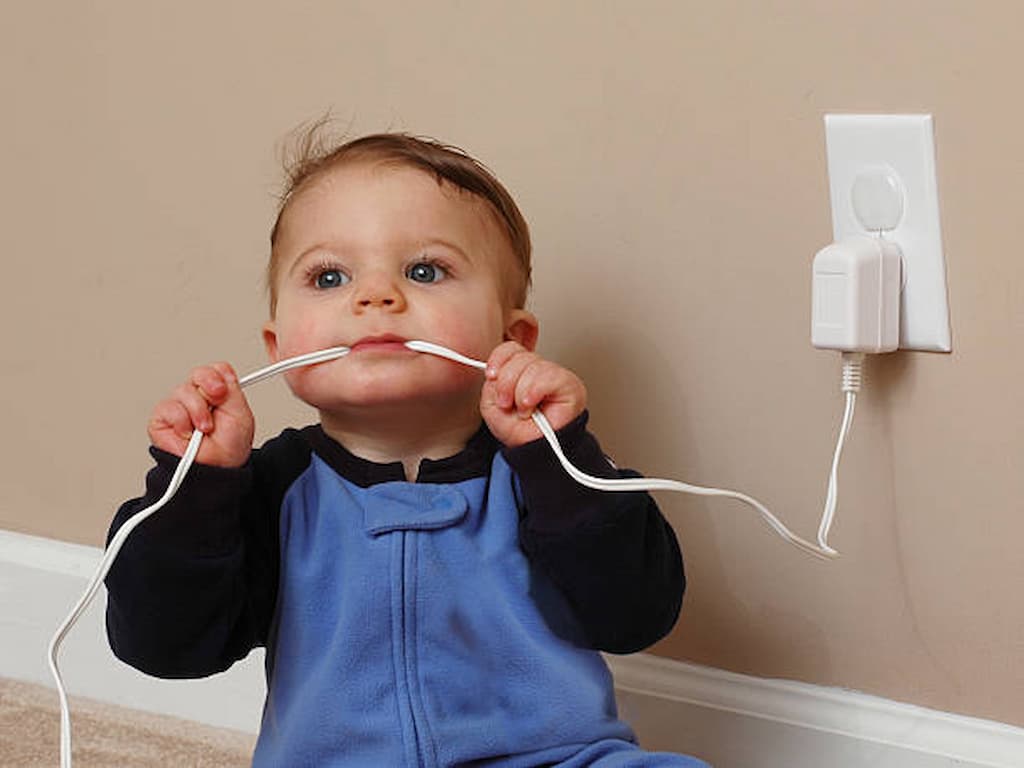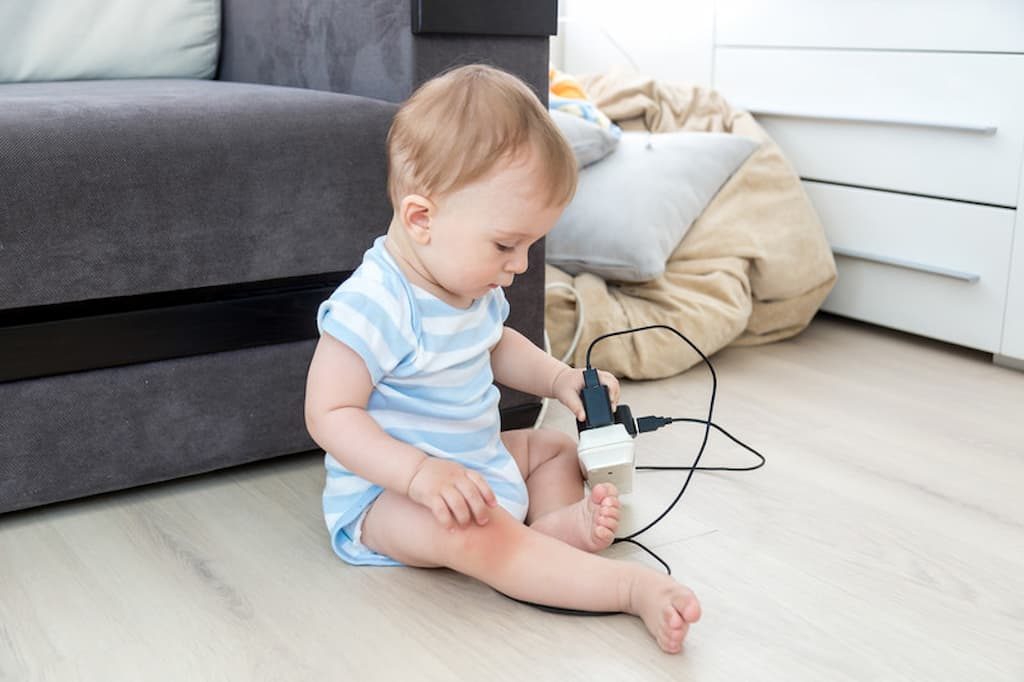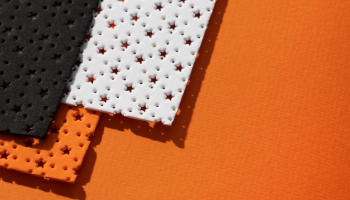
Electrical cords in every home pose hidden dangers to curious toddlers. Understanding and mitigating these risks is key to creating a safe environment for children. This article focuses on practical, effective methods for babyproofing electrical outlets and babyproof cords, including using cord covers, securing cords out of reach, installing electrical outlet covers, and strategically placing electrical devices. Our aim is to provide clear, actionable advice to help you make your home a safe exploration space for your little ones.
Effective babyproofing of electrical cords requires a multifaceted approach: employing cord covers to conceal them, securing loose cords out of reach, using electrical outlet covers to prevent electrical incidents, and strategically placing electrical devices to minimize hazards.
Key Takeaways
- Employ cord covers to protect and conceal electrical cords.
- Secure cords out of children’s reach to prevent accidents.
- Install electrical outlet covers to guard against electrical shocks.
Understanding the Risks
In every home, electrical cords are essential yet pose unseen dangers to children. The risks are multifaceted:
- Choking and Strangulation: Cords can be choking hazards for young children, who often explore by putting objects in their mouths. Additionally, there’s a risk of strangulation with longer cords.
- Electrocution: Damaged or exposed cords increase the risk of electric shock, especially if a curious child chews on them or pokes at open sockets.
- Tripping and Pulling: Cords across the floor can lead to tripping, and if a child pulls on a cord, it could bring down heavier objects, posing a serious injury risk.
Child Development and Risks
Toddlers’ natural curiosity drives them to explore, often leading them to electrical cords. As they grow, their reach and mobility increase, heightening the potential for cord-related accidents. This developmental phase of exploring by touching makes electrical cords particularly hazardous.
Understanding these risks is crucial for effectively babyproofing your home. The next section will explore in-depth strategies to safeguard against these hazards, providing practical and effective solutions to keep children safe.
In-Depth Strategies for Babyproofing Cords

Cord Covers and Concealers
A primary line of defense in babyproofing electrical cords is using cord covers and concealers. These devices are designed to encase cords, preventing children from accessing them. They come in various forms, such as rigid PVC cord covers, flexible neoprene sleeves, and even decorative fabric covers that blend with home décor. When selecting a cord cover, consider the location of the cords and the level of protection needed. For example, a hard PVC cover is suitable for high-traffic areas, while a softer neoprene might be better for low-lying, less accessible cords. Installation is generally straightforward, often involving simply enclosing the cord within the cover and securing it in place.
Securing Loose Cords
Loose cords should be secured out of children’s reach. This can be achieved using a variety of methods:
- Adhesive hooks or clips can be used to run cords along baseboards or the back of furniture.
- Cord shorteners or wraps can help manage excess length, preventing dangling cords that are tempting for little hands.
- In areas where cords cannot be completely concealed, ensure they are tightly secured against surfaces to minimize the risk of pulling or tripping.
Safety Outlets and Power Strips
Upgrading to child-safe outlets and power strips is an important step. Safety outlets come with built-in covers that slide or snap shut when the outlet is not in use, preventing children from inserting objects into the sockets. For power strips, look for models with childproof covers over each socket. Additionally, consider the placement of power strips – they should be kept out of sight and reach, ideally behind furniture or high up where a child can’t access them.
Placement of Electrical Devices
The placement of electrical devices plays a crucial role in cord safety. Keep appliances and lamps away from the edges of tables and counters to reduce the likelihood of a child pulling on the cord. When possible, opt for wireless or battery-operated devices to minimize the number of cords in the home. For essential corded devices, ensure that cords are not running across walkways and are as inconspicuous as possible.
By employing these strategies, parents and caregivers can significantly reduce the risks associated with electrical cords in the home. The next section will provide additional practical tips and tricks for everyday safety and maintenance.
8 Practical Tips and Tricks
While the in-depth strategies provide a comprehensive approach to babyproofing electrical cords, there are several practical tips and tricks that can further enhance safety in day-to-day situations:
- DIY Cord Bundling: For a quick and cost-effective solution, use common household items like zip ties or Velcro strips to bundle and secure cords. This not only keeps them organized but also makes them less appealing and accessible to curious children.
- Regular Cord Inspection: Periodically inspect all cords in your home for signs of wear and tear, such as fraying or exposed wires. Damaged cords should be repaired or replaced immediately to prevent the risk of electrocution or fire.
- Educating Children: As children grow, involve them in learning about electrical safety. Teach them the importance of not playing with cords and the dangers they present. This education can be a valuable addition to your babyproofing efforts.
- Furniture Arrangement: Consider the layout of your rooms. Place furniture in front of outlets and use it to conceal cords. This not only hides the cords but also restricts access to them.
- Use Cordless Appliances Where Possible: Embrace cordless technology for appliances and gadgets wherever feasible. Cordless items eliminate the risk entirely and are often more convenient to use.
- Avoid Extension Cords: Use extension cords sparingly and never as a permanent solution. If you find you’re relying on extension cords, it might be time to consider adding more outlets to your home.
- Secure Loose Ends: For cords that can’t be hidden or secured along a baseboard, use heavy-duty double-sided tape to stick the loose ends down, preventing them from becoming a plaything for children.
- Outlet Plugs: For unused outlets, simple plastic plug covers can be an effective deterrent. Ensure they fit snugly and are difficult for a child to remove.
By integrating these practical tips into your routine, you can further ensure the safety of your home for your little ones. In the next section, we will look at real-life applications and provide a room-by-room guide to effectively babyproofing electrical cords in various parts of your home.
Real-Life Applications
To translate the strategies and tips into practical, everyday use, here’s a room-by-room guide to effectively babyproofing electrical cords in your home:
Living Room
- Entertainment Systems: Secure cords from TVs, gaming consoles, and sound systems with cord concealers. Keep these devices away from the edges of stands to prevent children from reaching them.
- Lamps and Decorative Lights: Use cord shorteners for lamp cords, and place lamps where the cords can be easily hidden behind furniture.
Kitchen
- Appliances: Keep cords of kitchen appliances like toasters, blenders, or coffee makers tucked away and unplugged when not in use. Avoid leaving cords hanging over countertops where a child can pull them.
- Charging Stations: Set up a charging station for phones and tablets out of children’s reach, perhaps on a higher shelf or a wall-mounted holder.
Bedrooms
- Nightlights and Bedside Lamps: Choose cordless nightlights or secure lamp cords to the wall. Keep bedside tables tidy to prevent children from pulling on any loose cords.
- Electronics: For items like alarm clocks or phone chargers, route cords behind the furniture and use outlet covers for any unused plugs.
Nursery
- Baby Monitors and Humidifiers: Opt for cordless baby monitors or secure the cords high up and out of reach. For humidifiers and other nursery devices, ensure the cords are not accessible to a child from their crib or play area.
Bathroom
- Hair Dryers and Electric Razors: Always unplug these devices after use and store them, along with their cords, in a cabinet or drawer away from children’s curiosity.
Garage and Utility Areas
- Tools and Equipment: Keep power tools and their cords locked away in cabinets or on high shelves. Use cord organizers to prevent tangled messes that are attractive to children.
Common Challenges and Solutions
- Limited Space: In smaller homes or apartments where hiding cords is challenging, focus on securing them tightly against walls and using furniture strategically.
- Older Homes: In homes with fewer outlets, avoid overuse of extension cords. Consider hiring an electrician to install additional outlets for better cord management.
By considering the unique aspects of each room and the potential challenges, you can effectively apply the babyproofing strategies to create a safe environment for your child. Next, we’ll wrap up with a conclusion that emphasizes the importance of ongoing vigilance and a call to action for continuous safety.
Conclusion and Continuous Safety
In conclusion, babyproofing electrical cords is a vital step in creating a safe home environment for your children. While the methods outlined in this guide provide a strong foundation for safety, remember that childproofing is an ongoing process that requires regular review and adaptation as your child grows.
We hope these strategies bring you peace of mind and contribute to a safer, more secure space for your little ones to explore. Always stay vigilant and proactive in assessing your home’s safety, and enjoy the journey of parenthood with the confidence that you are providing a secure environment for your child’s growth and exploration.
Frequently Asked Questions
Can you baby proof electrical cords?
Yes, you can baby proof electrical cords to make your home safer for your little one. Baby proofing electrical cords involves using various strategies such as cord covers, cord concealers, securing loose cords out of reach, and using safety outlets. These measures help minimize the risks associated with electrical cords and prevent accidents.
How do I stop my baby from grabbing cords?
Stopping your baby from grabbing cords involves a combination of babyproofing and supervision. To prevent cord grabbing, you can use cord covers and concealers to make cords less accessible. Secure loose cords out of your baby’s reach and consider using adhesive hooks or clips to keep them along baseboards or behind furniture. However, the most important step is supervision – always keep an eye on your baby and redirect their attention away from cords if they show interest.
Why is my baby obsessed with cords?
Babies are naturally curious and drawn to objects that are different and interesting. Cords, with their varying shapes and textures, can be intriguing to babies. Additionally, cords often dangle and move, which can captivate a baby’s attention. It’s important to recognize this curiosity and take steps to babyproof your home to prevent potential hazards associated with cord exploration.








